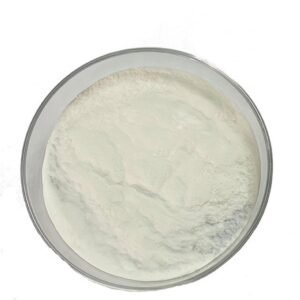Phthalic anhydride is an organic compound with the chemical formula C8H4O3. It is an important industrial chemical primarily used in the production of phthalate esters, which are widely used as plasticizers in the manufacturing of PVC (polyvinyl chloride) products. Here are some key points about phthalic anhydride:
- Chemical Structure: Phthalic anhydride consists of a benzene ring with two adjacent carbonyl groups (C=O) attached to it, forming an anhydride functional group. Its molecular structure is represented as (C6H4(CO)2O).
- Physical Properties:
- Appearance: Phthalic anhydride is a white crystalline solid at room temperature.
- Odor: It has a distinctive, pungent odor often described as sharp or acrid.
- Melting Point: Phthalic anhydride has a relatively high melting point of around 131°C.
- Solubility: It is sparingly soluble in water but dissolves readily in organic solvents such as acetone, benzene, and toluene.
- Synthesis: Phthalic anhydride is typically produced by the oxidation of ortho-xylene or naphthalene in the presence of a catalyst, such as vanadium pentoxide or a mixed metal oxide catalyst.
- Applications:
- Plasticizers: The primary use of phthalic anhydride is in the production of phthalate esters, which serve as plasticizers in the manufacturing of PVC products. These plasticizers improve the flexibility, durability, and workability of PVC materials.
- Alkyd Resins: Phthalic anhydride is used in the production of alkyd resins, which are important components in coatings, paints, varnishes, and adhesives.
- Dyes and Pigments: It is employed in the synthesis of certain dyes and pigments, particularly phthalein dyes.
- Polyester Resins: Phthalic anhydride is also used in the production of unsaturated polyester resins, which find applications in fiberglass-reinforced plastics, composites, and laminates.
- Health and Safety Considerations:
- Phthalic anhydride is a respiratory and skin irritant. Prolonged or repeated exposure may cause dermatitis, respiratory irritation, and asthma-like symptoms.
- It is also considered a potential carcinogen and mutagen.
- Proper personal protective equipment (PPE), including gloves, goggles, and respiratory protection, should be worn when handling phthalic anhydride. Adequate ventilation is essential to minimize exposure risks.
- Environmental Impact:
- Phthalic anhydride may pose environmental hazards if released into the environment. It can contaminate soil, water bodies, and air, leading to adverse effects on ecosystems and human health.
- Proper handling, storage, and disposal practices should be followed to prevent environmental contamination.











Reviews
There are no reviews yet.